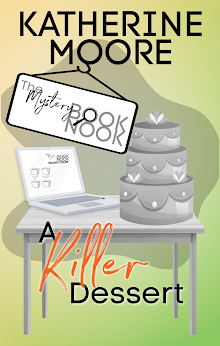 In a post-apocalyptic world, a
human joins forces with an angel to rescue her little sister as a resistance
movement launches its first mission against the supernatural creatures.
In a post-apocalyptic world, a
human joins forces with an angel to rescue her little sister as a resistance
movement launches its first mission against the supernatural creatures.
Definitely in the dystopian tradition
of Hunger Games, this story of a
world in which paranormal creatures rule the night has a fine, feisty heroine,
an intriguing anti-hero angel without wings and a quest. It’s well-written but
derivative (especially for readers of the genre in general and Hunger Games in particular).
PENRYN YOUNG is 17
and basically in charge of her family—her mentally ill mother and her disabled
sister PAIGE—in the wake of world-wide apocalypse involving angel attacks.
Everyone on earth saw GABRIEL, the Messenger of God, killed in Jerusalem and
since then, angels have hunted and killed humans for their own uses.
Penryn
is uniquely suited to protect her family since her paranoid mother signed her
up for a series of self-defense classes. That’s good because her mother is off
her meds and unpredictable and her sister is useless. The family has been
hiding out on the top floor of an apartment building, but the bands of roving
gangs have been scavenging closer and closer for days. Penryn realizes it’s
time to move and despite her mother’s terror of the night (when the streets are
empty of humans but filled with all kinds of predators), she wants to move at
night. With her mother pushing a shopping cart and Penryn pushing her baby
sister in a wheelchair, the trio sets out.
This
is the first in a series, and for that reason, the ending is a bit unsatisfying
as it sets up stories to come. Still, there are things that draw us in. Why are
the gangs kidnapping children and selling them to the angels? What exactly
constituted the angel attack? What different factions exist in the angel
hierarchy and why were Raffe’s wings cut off?
The family dynamic
set up here is almost identical to the one in HUNGER GAMES. Like the heroine of
the Suzanne Collins novel, Penryn is the strong one in the family and the
protector of her younger sister. As with HUNGER GAMES, the mother is not a
factor. Here Penryn’s mother is literally crazy, a paranoid schizophrenic who
is off her meds and who relies on a weird selection of “magical” talismans to
stay safe.
Penryn is given a
believable backstory that accounts for her being able to fight. We are annoyed
that she shares the Bella Swan insecurity about her looks. (In Twilight, you may remember, Bella HAS NO
IDEA how beautiful she is. Please.) The silliest scene in the book occurs when
Penryn dresses in the skimpy outfit Raffe has provided so she’ll gain entrance
to the aerie. (The angels aren’t supposed to have children with the Daughters
of Men, but anything up to actually impregnating one seems to be okay. And the
angels like pretty.)
Raffe, the
wingless angel who makes an uneasy alliance with Penryn, is just too mundane
for a supernatural character. It’s not just the way he expresses himself (sort
of like the coolest kid in high school with dialogue that’s way too
contemporary to be believed) but also certain elements of his existence. He
carries a sentient sword but watches TV? Atonal. The angels like partying with
human women in clubs? Might work in a regular urban fantasy but not in a
post-apocalyptic one. Sure, he occasionally makes cracks about “monkeys” but he
doesn’t really mean it. The problem is that if you’re going to create a
paranormal/supernatural character that character really, REALLY should be something
other than normal. Most of the time, Raffe is just a guy with scars where his
wings once were.
We also wonder why
we don’t see different orders of angels here—like the terrifying seraphim with
their many wings and multiple eyes. The writer postulates a series of angel
factions jockeying for position like a Borgia’s manipulating rivals, but with
the exception of different colored wings (including one with very cool
tiger-striped wings), the angels more or less look the same.
The world-building
here isn’t particularly deep but it is detailed. We get the sense that whatever
has happened did not happen that long ago. It’s still possible to scavenge food
from the break rooms of office buildings, and occasionally in houses. But
civilization is breaking down—with feral children and even more terrible things
skittering around in the dark and the shadows. One of the more terrible scenes
in the book occurs when Raffe and the heroine come across the bodies of two
little girls who were hung out alive for something to feed on them. (Again,
this reminds us a bit of HUNGER GAMES where even little children can end up
murdered.)
One of the more interesting details
in the story is the way that angel feathers are used as currency and symbols. Raffe’s
cut-off wings are both beautiful and creepy and they end up being used as a
disguise several times, which works.
This is a quest
story and it follows the usual path of such stories in that it’s episodic, with
characters coming in and out of focus as the quest continues. The sojourn among
the people planning “something big” to kick off their rebellion feels
belabored, and we find ourselves eager for our protagonists to move along.
This is, in many
ways, a somewhat standard-issue YA novel—equal parts supernatural romance and
dystopian adventure. The angel-apocalypse story is entertaining though, and
well worth looking into the sequels.






No comments:
Post a Comment